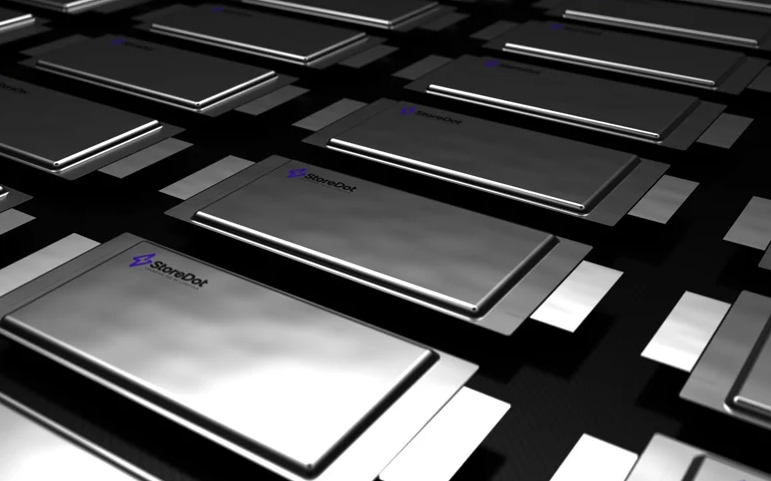The list of top batteries of a particular chemistry and their manufacturers is given below:
| Battery Type | Development Stage | Energy Density Range (Wh/Kg) | Safety | Costs | Top Manufacturer |
| Lithium-Air | Prototype | 1,200-1,500* | High | Low | PolyPlus: Li-Air – In advanced prototyping stage – Max density > 800 Wh/Kg – Water-based cathodes – Shelf-life of >10 years |
| Lithium-Sulphur | Prototype | 500-900* | Low | Moderate | Zeta Energy – Partnering with Stellantis to manufacture EVs – Max density 450-500 Wh/Kg |
| Lithium-Silicon Anode | Commercial Grade | 500 | Medium | High | Amprius Technologies – Shipping prototypes for EVs – Max density 500 Wh/Kg – Run >200% of graphite cells |
| Lithium-Titanate | Commercial Grade | 50-80 | Very High | High | Toshiba SCiB LTO Battery – Max density 89-106 Wh/Kg – High input/output characteristics |
| Lithium-NCA | Commercial Grade | 280-330 | Low | High | Panasonic 2170 – Max density 260 Wh/Kg – Powers Tesla’s Model 3 |
| Lithium-NMC | Commercial Grade | 150-220 | Medium | High | CATL Qilin Battery – Max density 255 Wh/Kg – Record-breaking 72% volume utilization efficiency |
| Lithium-Iron Phosphate | Commercial Grade | 90-160 | Very High | Low | BYD Blade battery – Max density 190 Wh/Kg – Extremely safe – To be fitted into the BYD Han EV series |
| Lithium-Cobalt Oxide | Commercial Grade | 150-250 | Low | High | Nichia LiCoO2 Battery – Max energy density 150 – 200 Wh/Kg |
| Solid State | Prototype | 400-500* | Very High | High | CATL Condensed Battery – Max density 500 Wh/Kg – Capable of powering a 4T airplane |
| Advanced Sodium-Ion | Commercial Grade | 160-200 | High | Low | CATL Freevoy – Max density 200 Wh/Kg – Hybrid vehicle battery with pure electric range >400km |
* Refers to claims from R&D
The above mentioned list contains the energy density, the development stage, the relative cost, the safety levels and the manufacturer details.
Many of the above mentioned batteries are still in protype stages and may or maynot be released by their developer.
The Challenges of Developing Top Batteries in 2025
Over the past two decades, as battery technology has advanced, we’ve witnessed the rise of electronic gadgets—from smartphones to handheld power tools. These improvements have also revolutionized mobility, powering everything from drones and e-bikes to electric cars and even aircraft.
Beyond consumer electronics and transportation, batteries are playing a crucial role in grid-level energy storage. Today, they are so widespread that imagining a world without them is nearly impossible.
However, the continuous evolution of battery technology presents significant challenges for manufacturers. There’s relentless pressure to develop batteries that are more powerful, safer, longer-lasting, and cost-effective. One of the highest performing batteries is the Lithium Ion. Within the lithium-ion family alone, various chemistries offer distinct advantages—some excel in energy density, others in safety, longevity, or affordability, but no single chemistry excels in all aspects. It has to be mentioned though, that Lithium Ion is fast approaching its material limits and further gains will be made by using nanostructures.
Lithium-Silicon Anode – Amprius Technologies
The first battery worth mentioning is the Lithium-Silicon Anode, which has recently reached commercial viability. This battery boasts an energy density of 500 Wh/kg, nearly double that of batteries used in long-range electric vehicles. Amprius Technologies has achieved this breakthrough by using silicon nanowires to mitigate the common issues of swelling and cracking, making it a superior alternative to traditional graphite anodes.
NCA Lithium-Ion – Panasonic & Tesla
In the Nickel Cobalt Aluminum (NCA) Lithium-Ion category, Panasonic leads with an energy density of 260 Wh/kg. Their 2170 battery cells power the Tesla Model 3, making them a key player in the EV market.
NCM Lithium-Ion – CATL’s Qilin Battery
For Nickel Cobalt Manganese (NCM) Lithium-Ion batteries, CATL’s Qilin battery takes the lead with an energy density of 255 Wh/kg. This battery is uniquely designed to maximize volume utilization, allowing for more efficient energy storage in EV battery packs.
Lithium Iron Phosphate (LFP) – BYD Blade Battery
In the Lithium Iron Phosphate (LFP) category, known for its exceptional safety and longevity, BYD’s Blade Battery stands out. With an energy density of 190 Wh/kg, it may not be the highest, but its superior safety profile makes it the preferred choice for many EV manufacturers.
Lithium Titanate (LTO) – Toshiba SCiB Battery
When it comes to safety and rapid charging, the Lithium Titanate (LTO) battery is unmatched. The leading battery in this category is the Toshiba SCiB LTO Battery, with an energy density of 106 Wh/kg. While it has a lower energy density compared to other lithium-ion chemistries, its ultra-fast charging capability makes it a valuable option for specific applications.
Upcoming Battery Technologies
Beyond these commercially available batteries, several promising technologies remain in development, including:
- Lithium-Sulfur
- Solid-State Batteries
- Lithium-Air Batteries
These innovations have the potential to reshape the battery landscape in the coming years.
